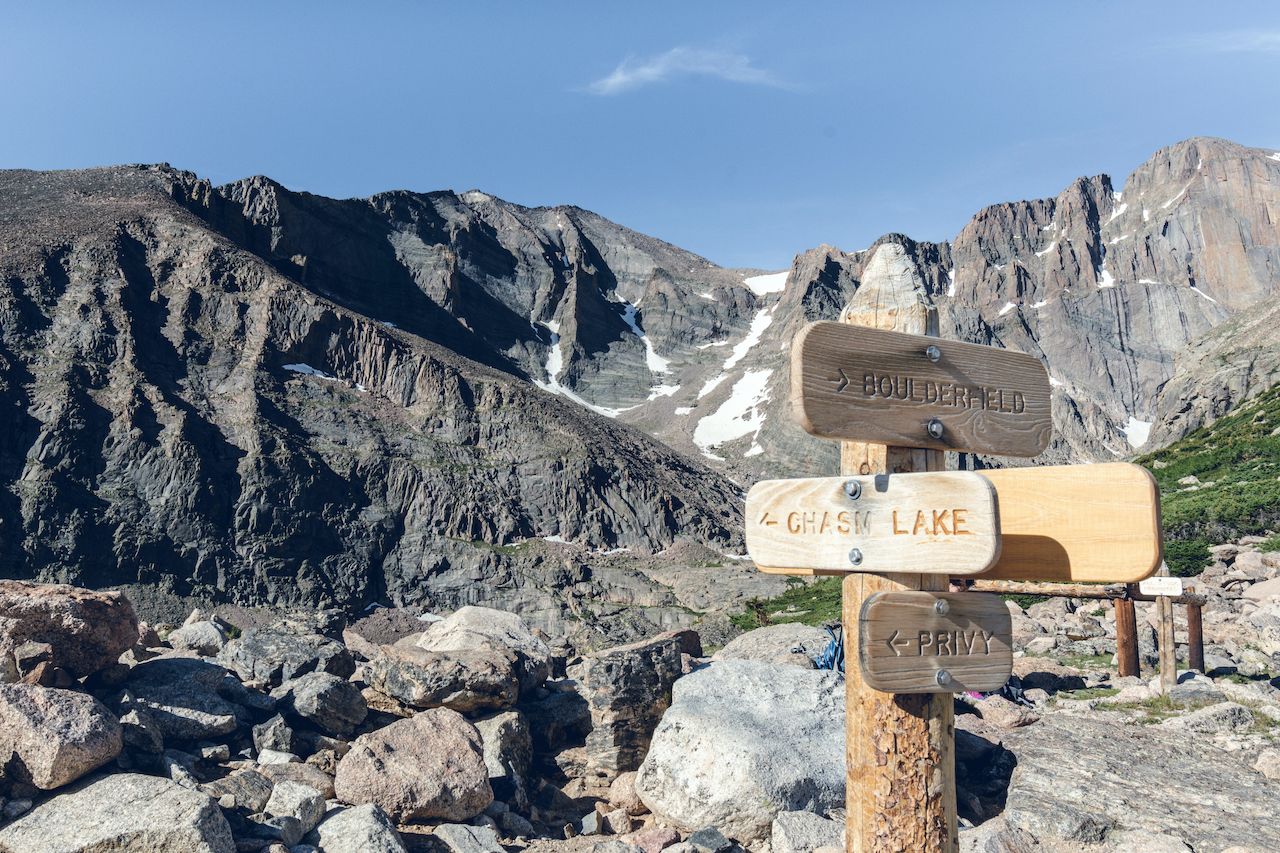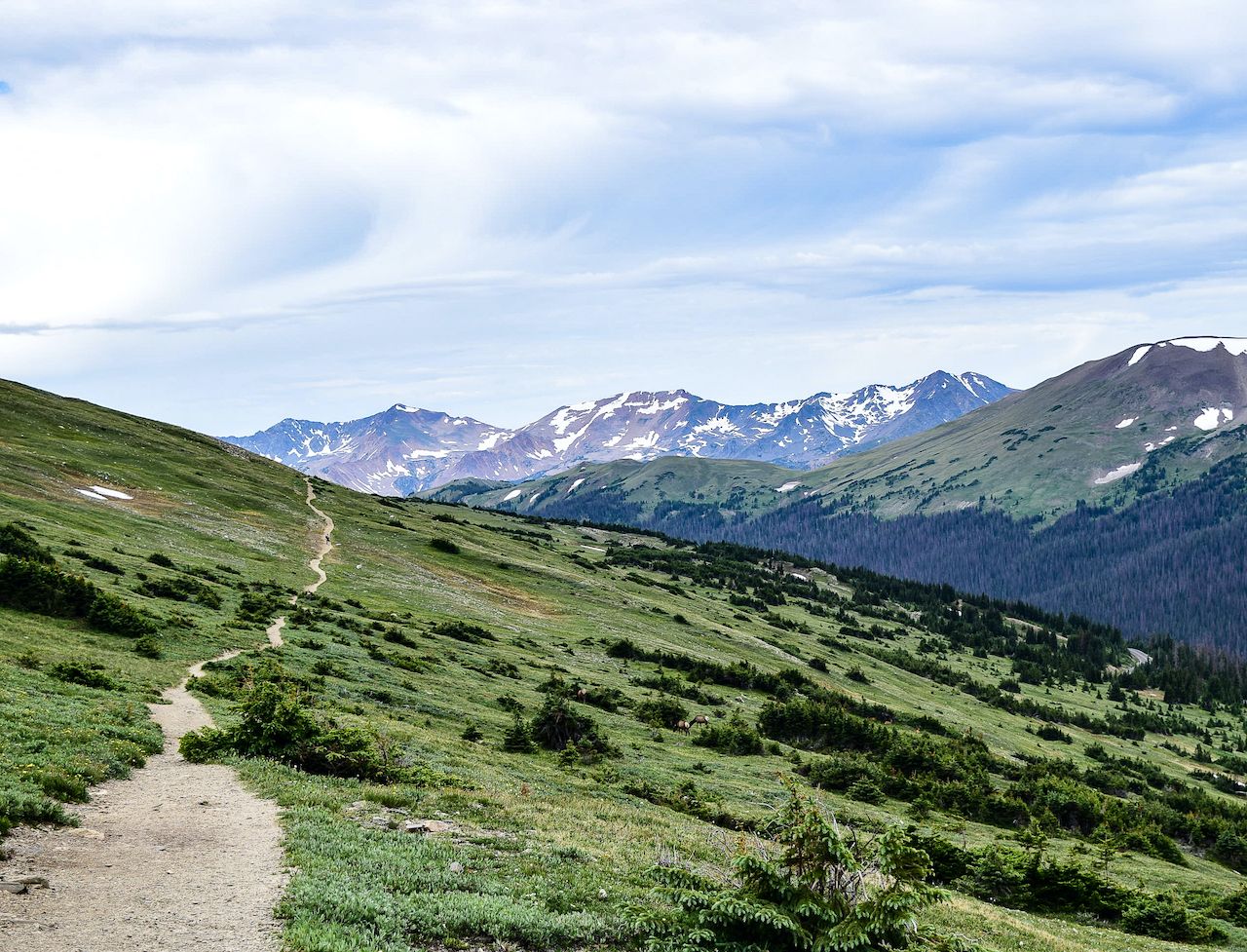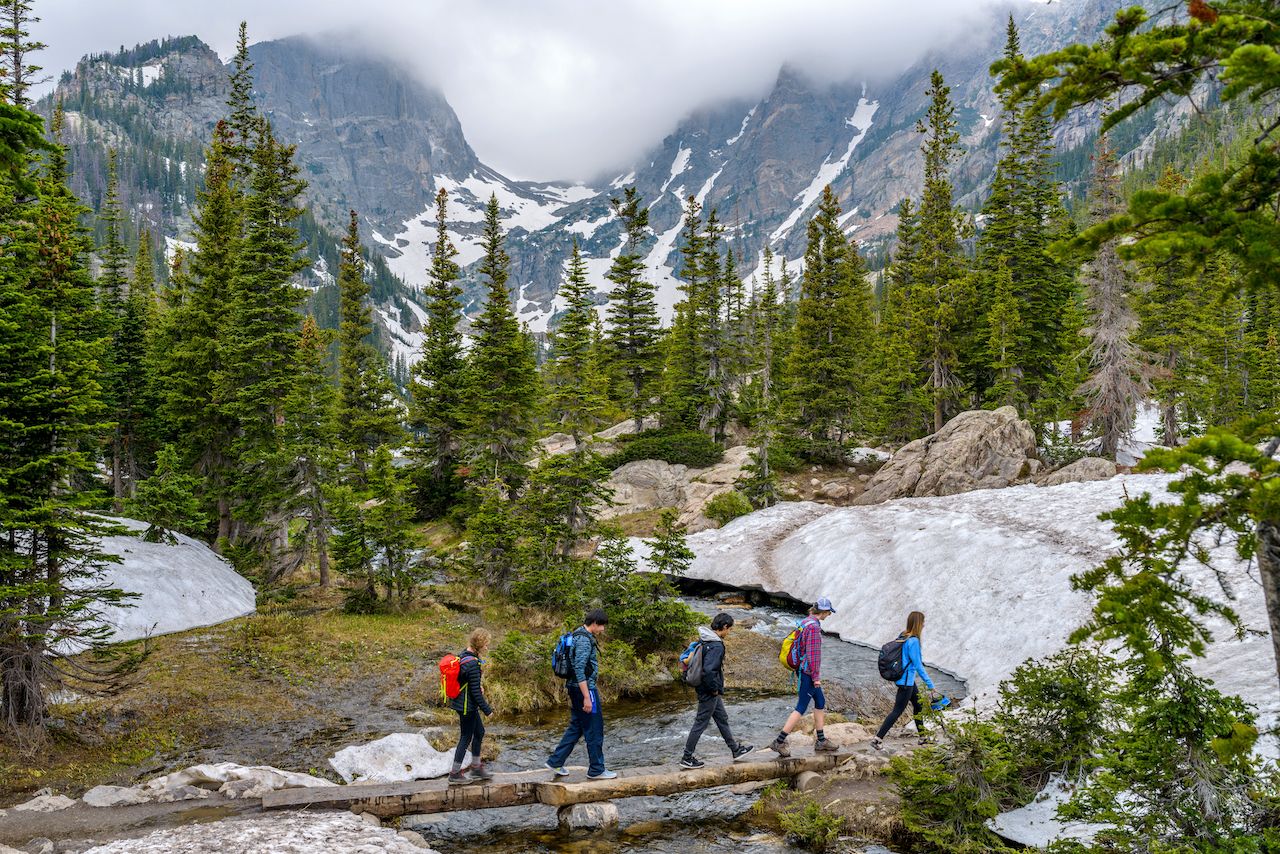With 355 miles of trails, Rocky Mountain National Park’s best hikes make up a long, long list. While they can be divided into three categories — lake hikes, waterfall hikes, and summit hikes — many traverse all varieties of terrain and offer wide-ranging views and experiences. Pick up a map from the park’s visitor centers, or use a way-finding app like CoTrex to locate specific trailheads. These are some notable favorites, with all mileage denoted as round-trip.
Lake hikes

Photo: Yarik Sychov/Shutterstock
Chasm Lake — Possibly the best lake hike in Rocky, Chasm Lake starts at the Longs Peak trailhead and puts you right on the water, gazing at the famous “Diamond,” the east-facing wall of the peak. This trail starts at 9,405 and heads above the treeline, so be sure to begin early to avoid afternoon thunderstorms. 8.5 miles; 2,566 feet elevation gain; strenuous

Photo: Tupungato/Shutterstock
Emerald Lake — This trail starts at the Bear Lake trailhead and winds past Bear Lake, Nymph Lake, Dream Lake, and finally Emerald Lake — all watery spots melting off the Tyndall Glacier. 3.3 miles; 650 feet elevation gain; easy
Lake Helene — Also starting at the Bear Lake trailhead, this time you’ll venture toward Bierstadt Lake and the Mill Creek Basin toward the Flattop Mountain trail. Once at the lake, the 12,129-foot Notchtop Mountain is looming over you, a sentinel from above. 6.5 miles; 1,340 feet elevation gain; moderate
Waterfall hikes

Photo: cvm/Shutterstock
Alberta Falls — This is an especially great fall hike, as the route to the waterfall winds through mixed pine forest and aspen groves. Starting at the Glacier Gorge trailhead, you’ll end at the thunderous 30-foot falls, with an option to continue on to Mills Lake. 1.2 miles; 210 feet elevation gain; easy
Ouzel Falls — The trek to Ouzel Falls begins from the Wild Basin trailhead, by far the most remote section of the park. You’ll pass several smaller waterfalls and backcountry campsites on your way to the 40-foot Ouzel Falls. Go a bit off-trail to get the best vantage point. 5.4 miles; 960 feet elevation gain; moderate

Photo: Kelly vanDellen/Shutterstock
Timberline Falls — The beginning of this trek is also the hike to Alberta Falls. It continues on through gorges and valleys, all the way to The Loch, a beautiful subalpine lake, the Taylor Glacier, and the impressive Sky Pond. Toward mile four, you’ll climb 200 feet in 0.15 miles, ending with views of the 100-foot falls. 8 miles; 1,510 feet elevation gain; strenuous
Summit hikes

Photo: Gloria V Moeller/Shutterstock
Ute Trail to Tombstone Ridge — This is a great acclimation hike for those new to this kind of elevation. Despite the easy elevation gain, it still offers panoramic views along Tombstone Ridge and into Forest Canyon — because it starts at 11,430 feet. 4 miles; 481 feet; moderate
Mount Ida — If you’re not quite up for hiking a 14er, consider Mount Ida. You’ll hit about 100 feet shy of 13,000. Start at Poudre Lake, and by mile 3.5, you’ll be at the mountain’s base. Be prepared for some off-trailing, rugged terrain, and adrenaline spikes. 9.6 miles; 2,465 feet; strenuous

Photo: Sean Xu/Shutterstock
Flattop Mountain — For Flattop Mountain, you’ll take the Bear Lake trailhead all the way to epic views of the Continental Divide. It’s a constant, steady ascent from 9,450 feet to 12,300-plus. At the top, climb another 389 feet to Hallett Peak, or just bask in the bird’s-eye views of the park at Flattop. 8.5 miles; 2,866 feet; strenuous